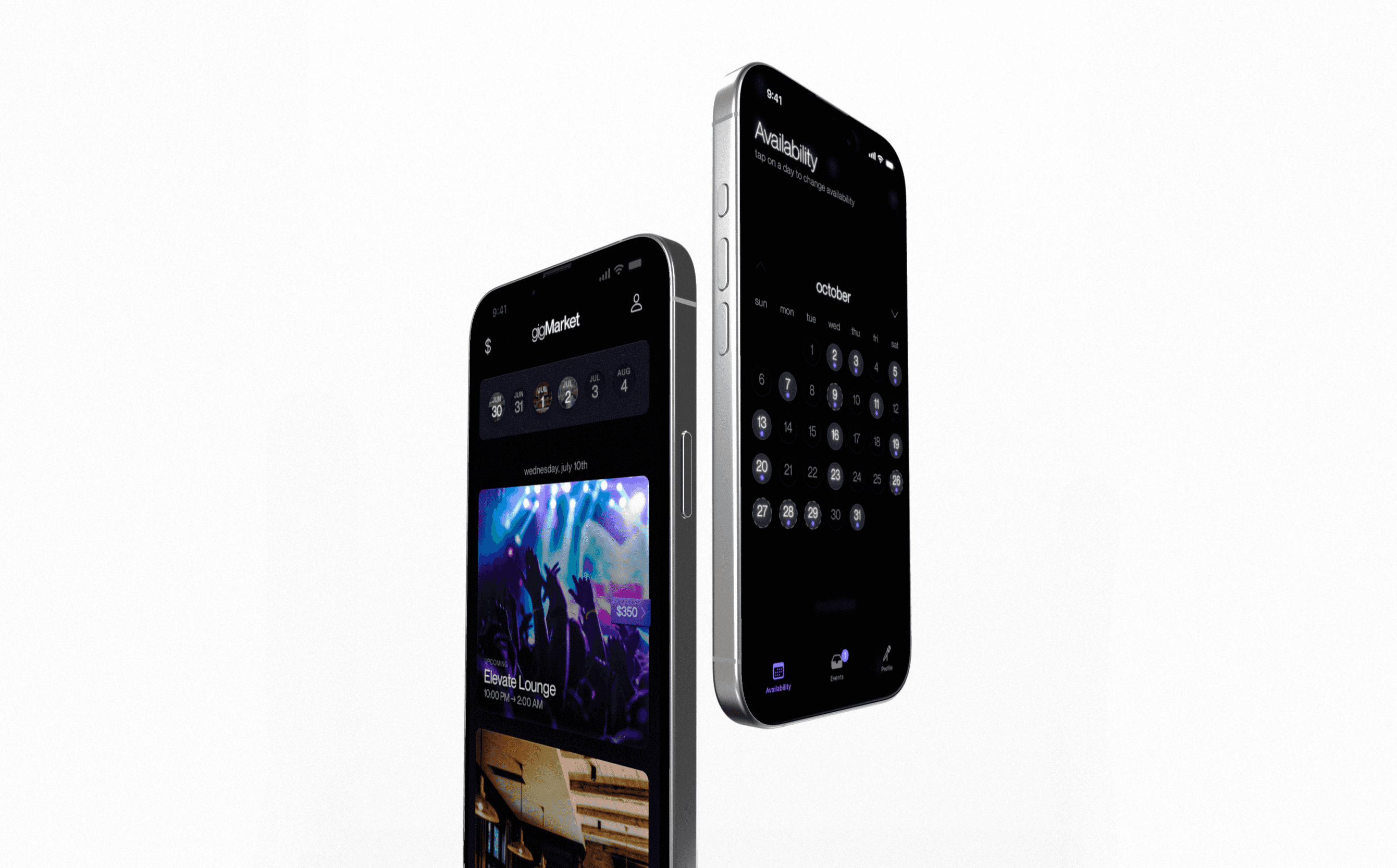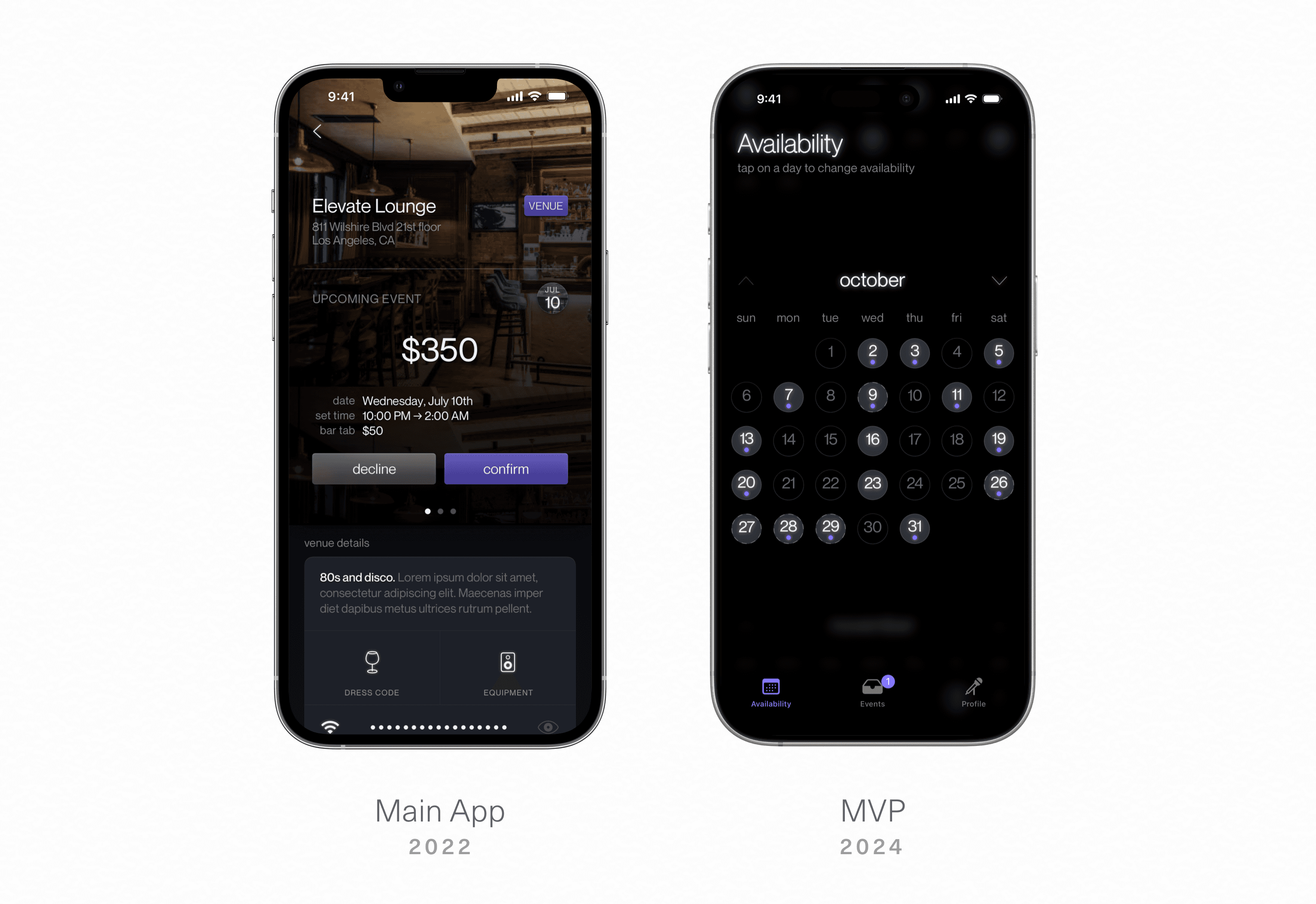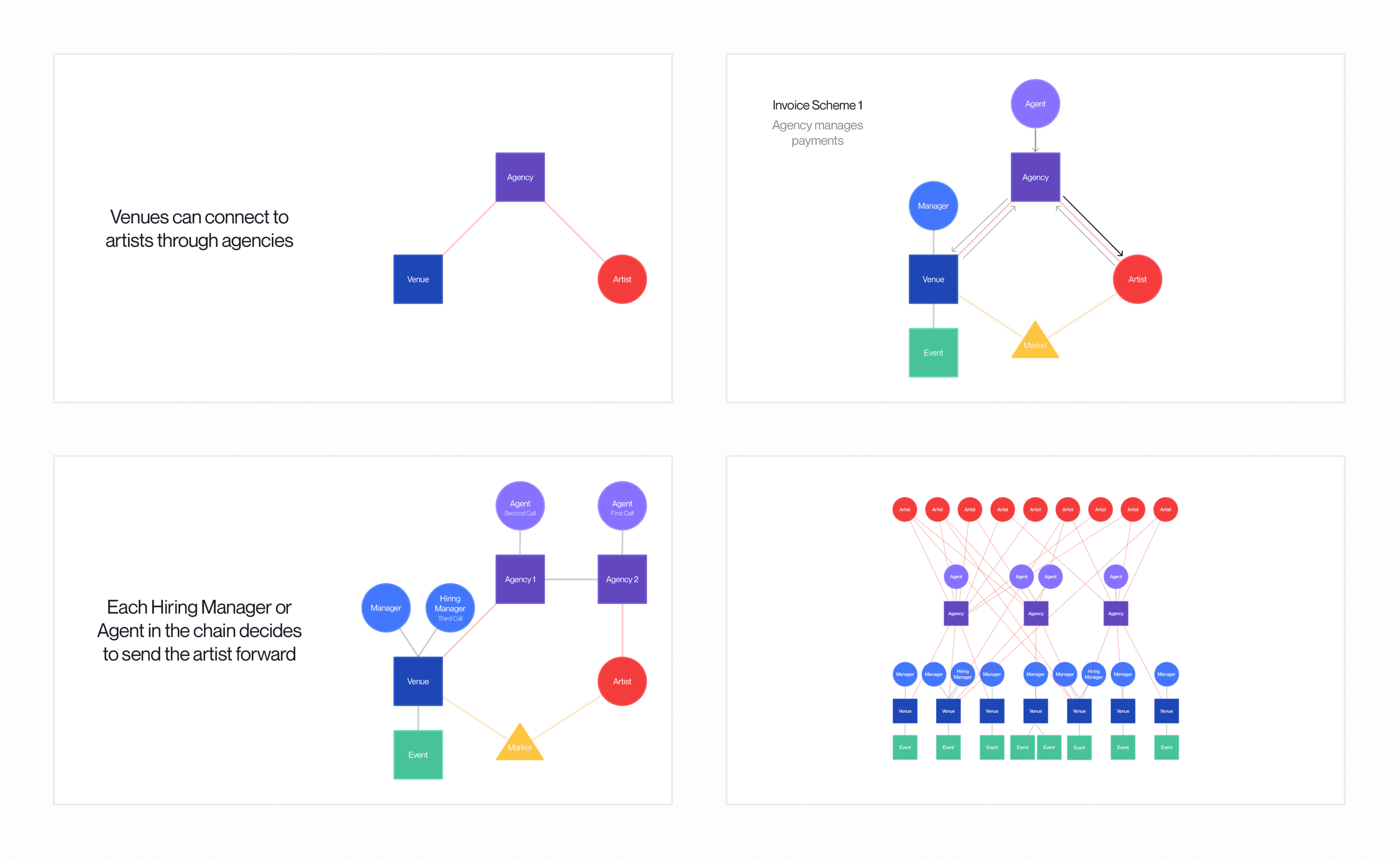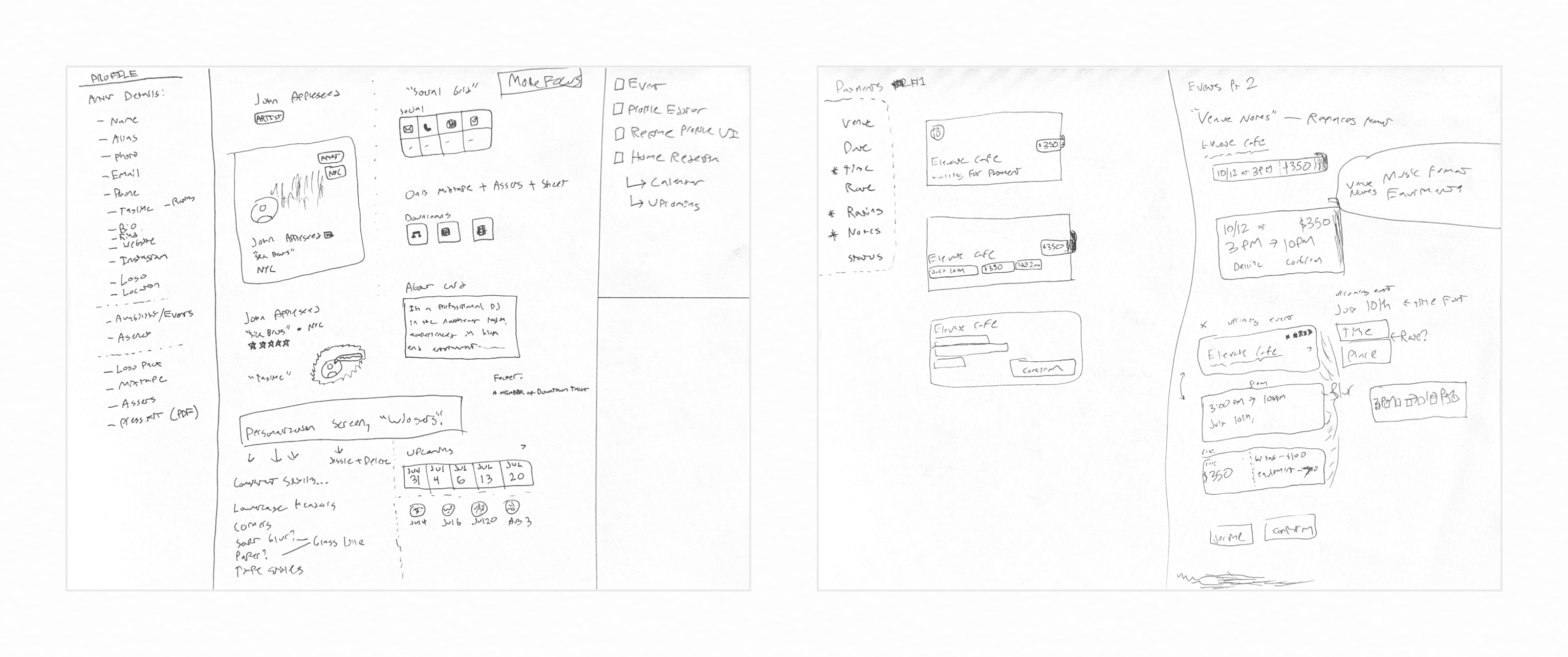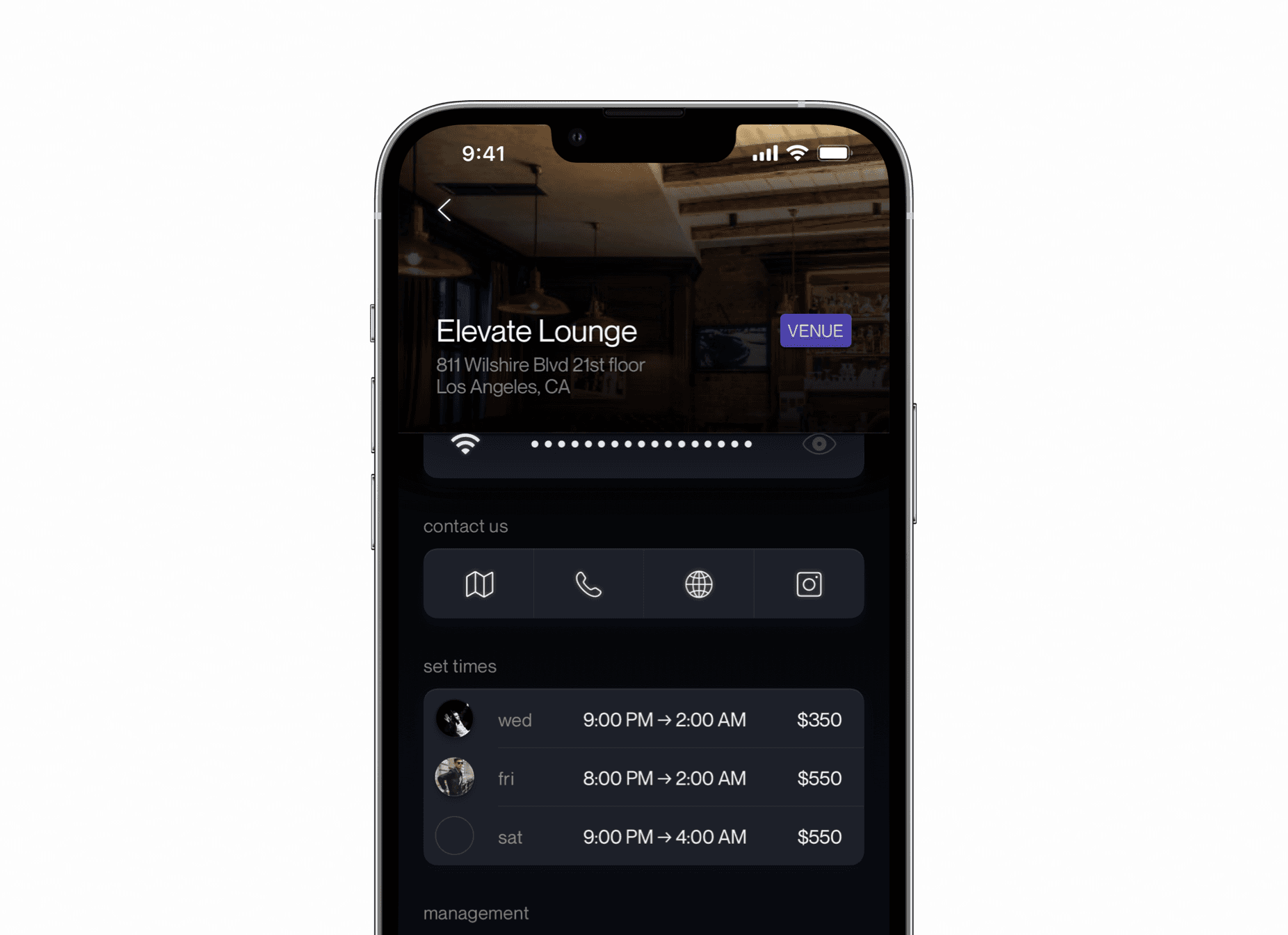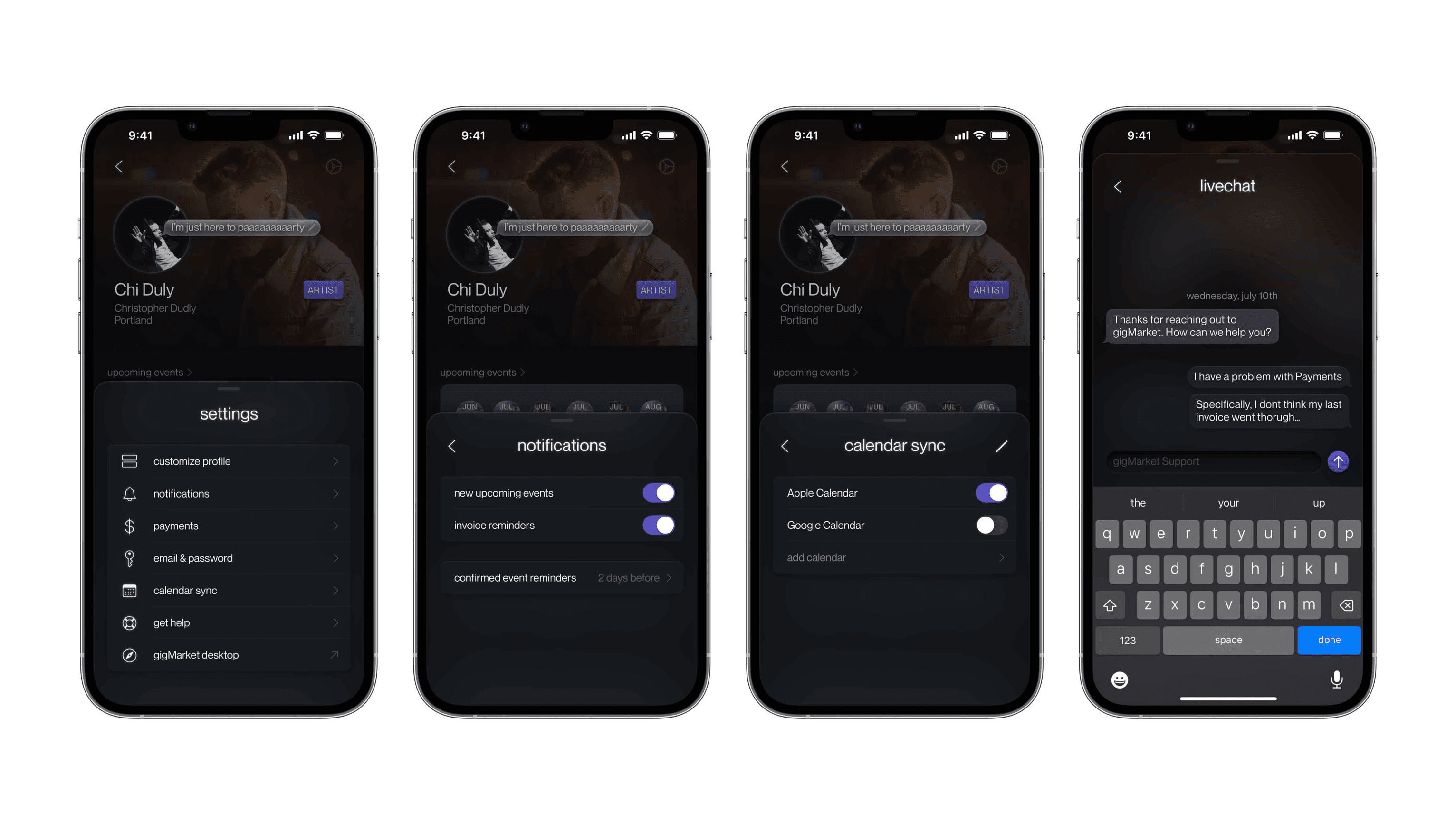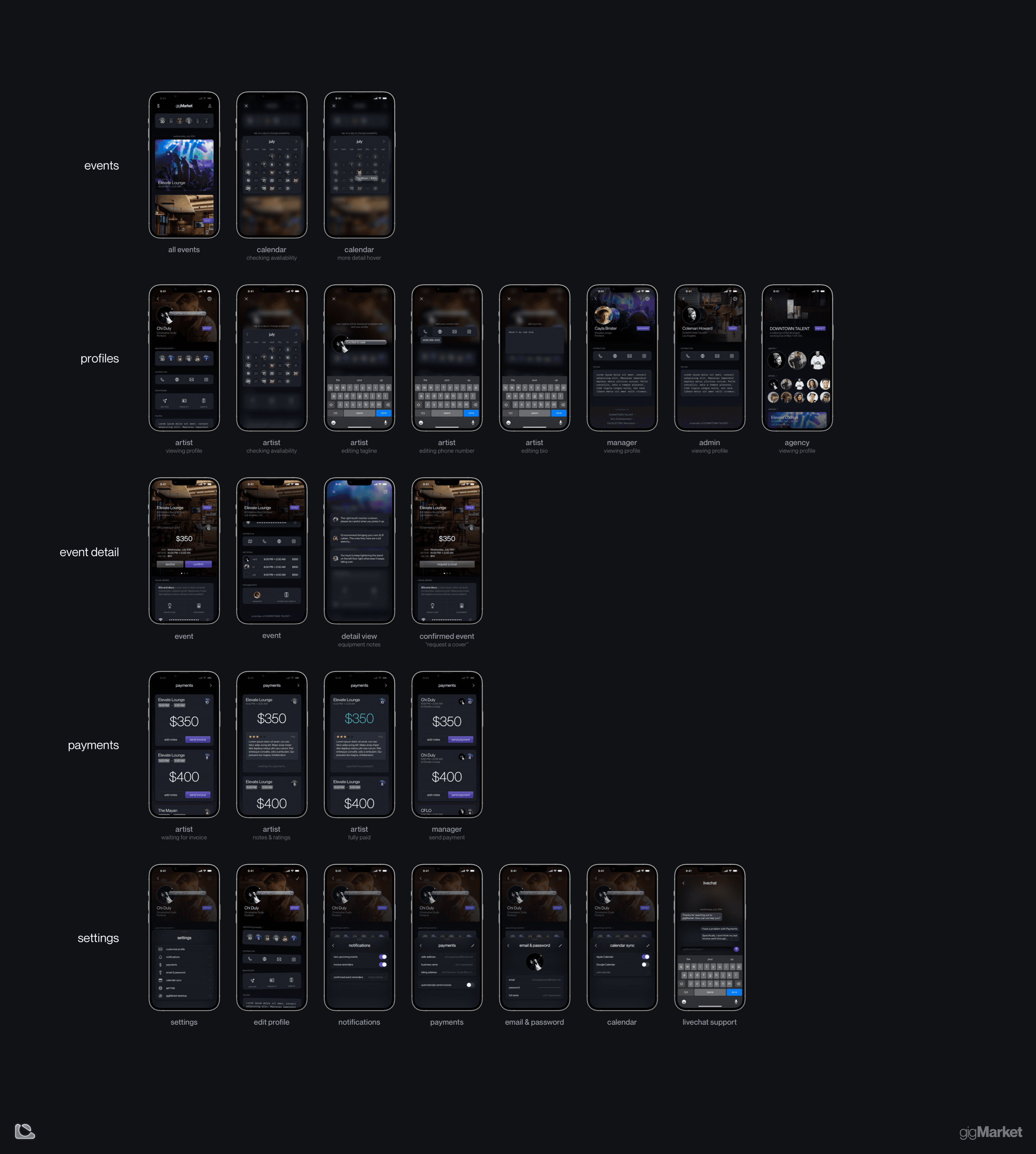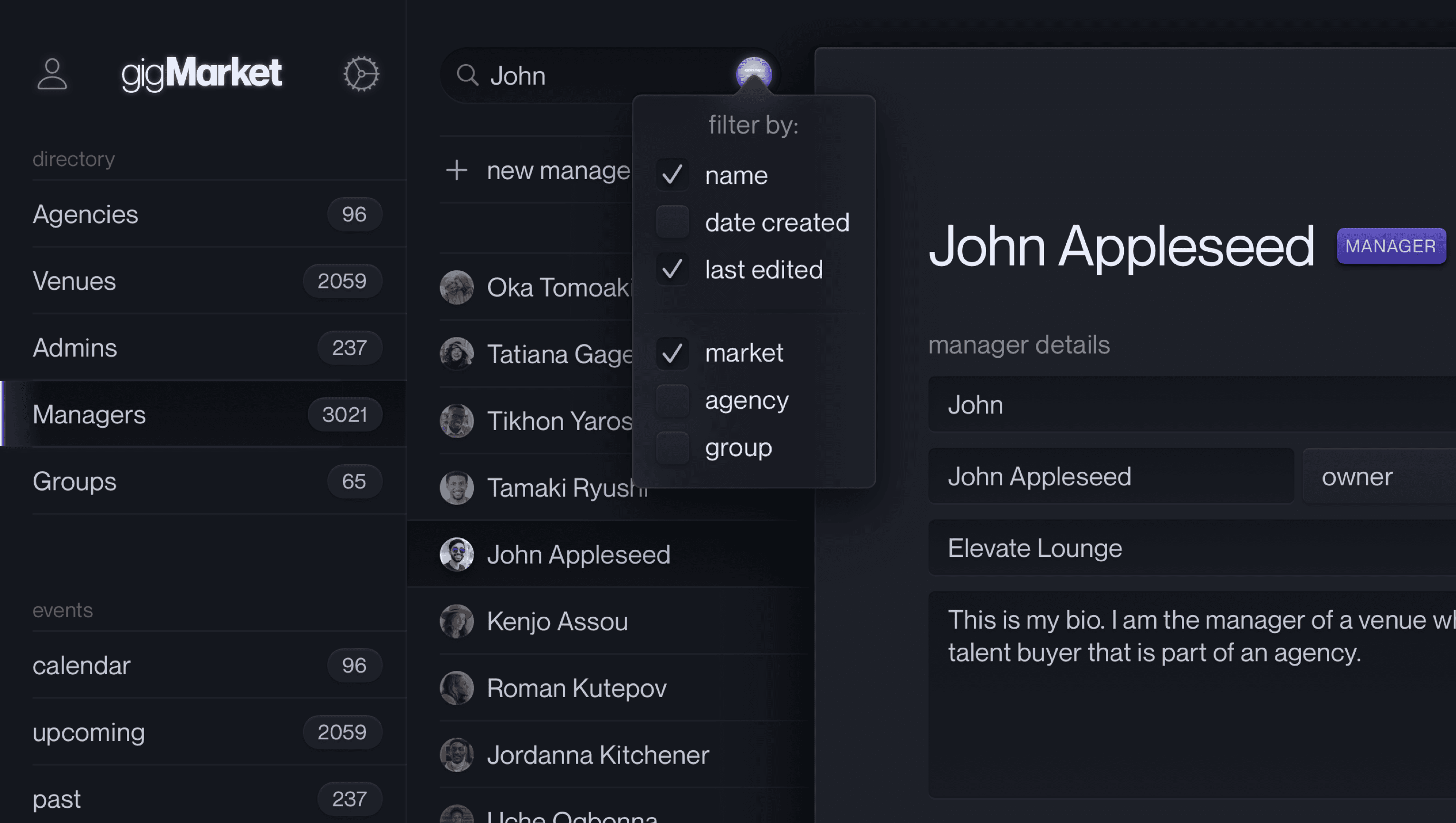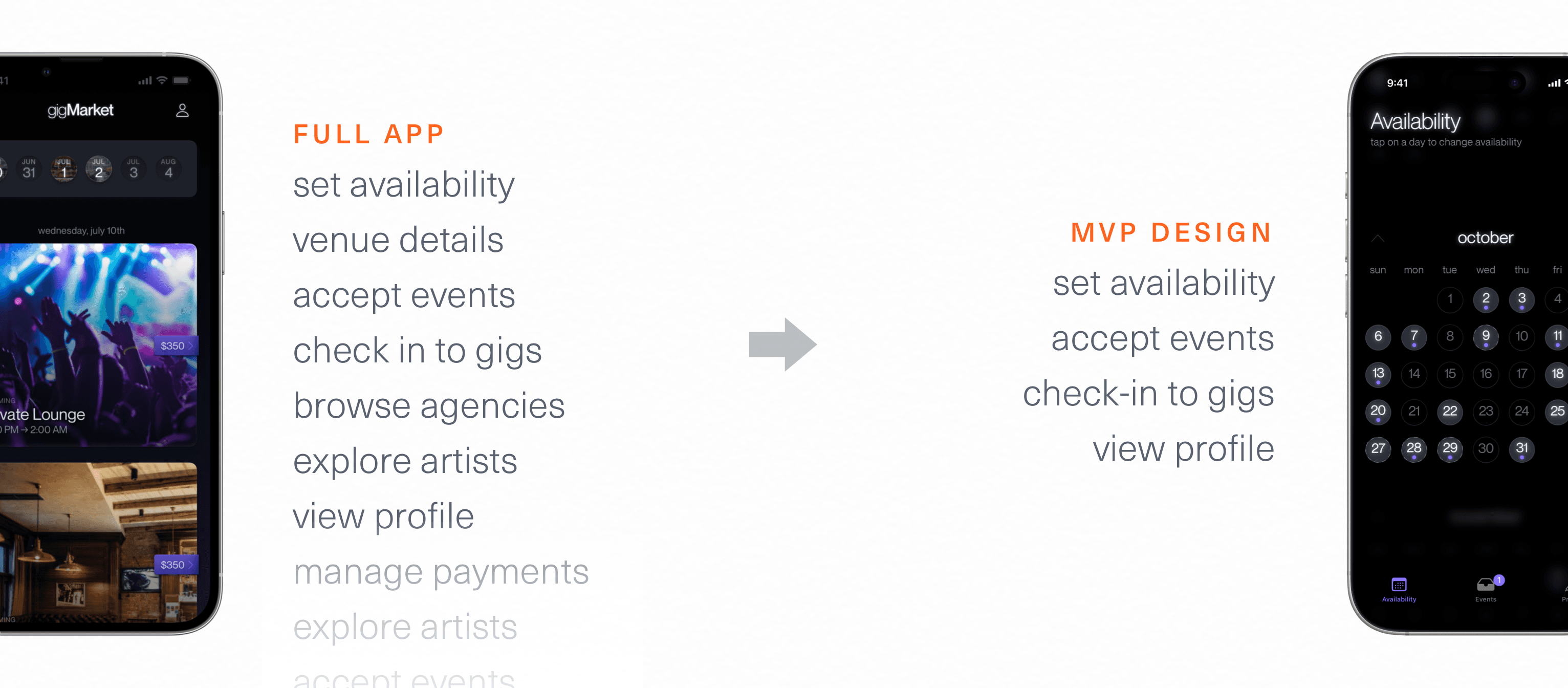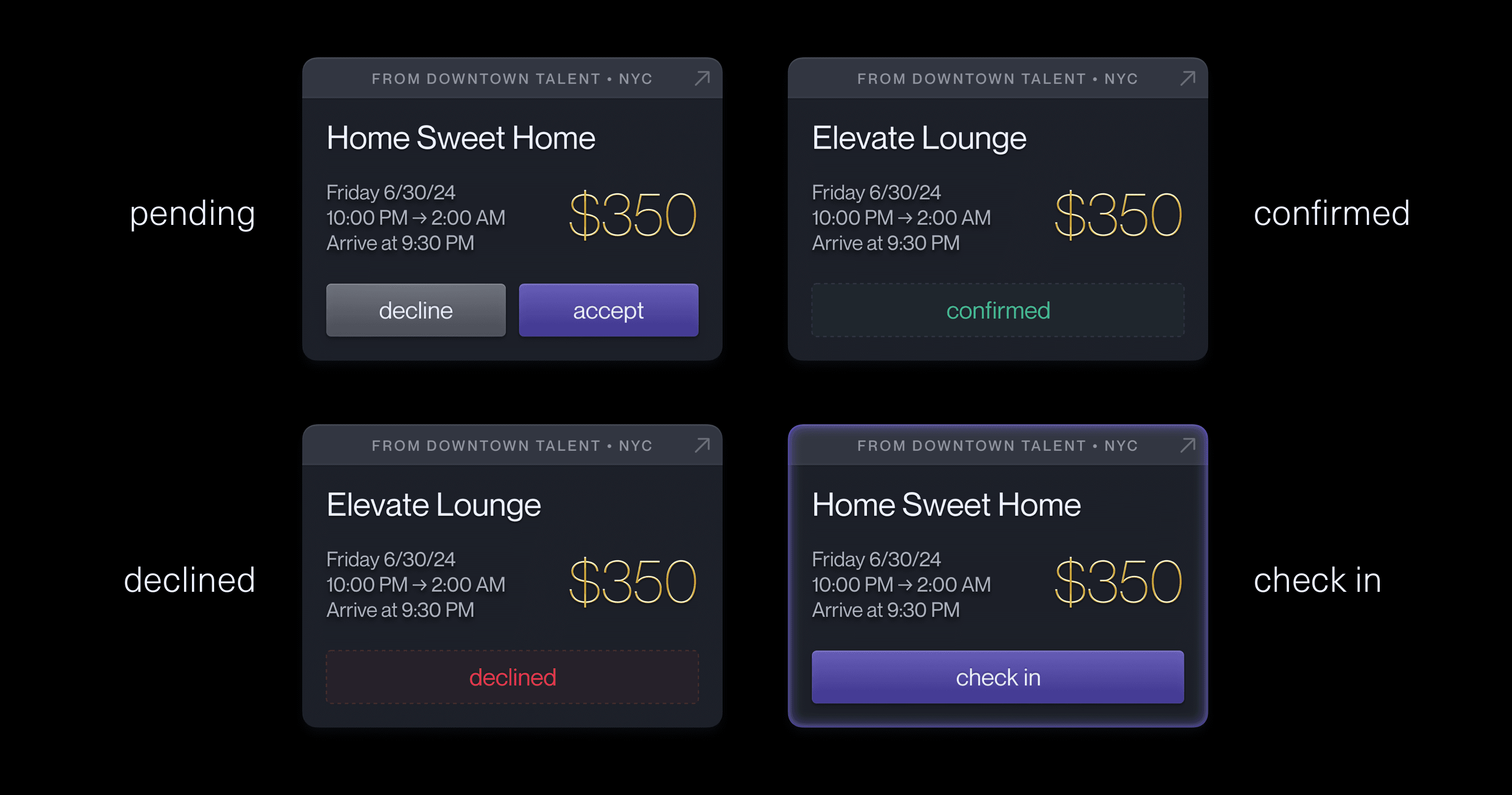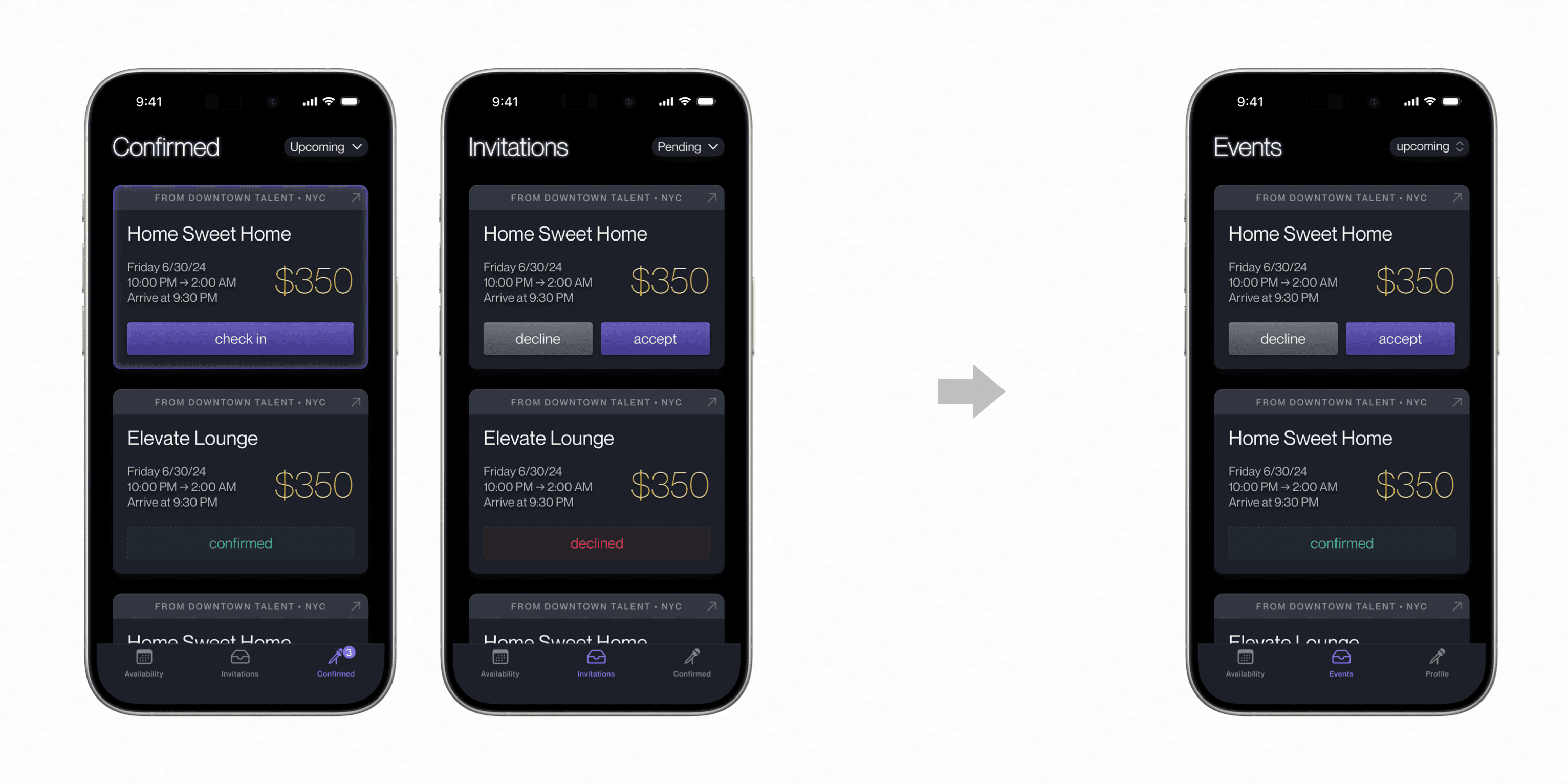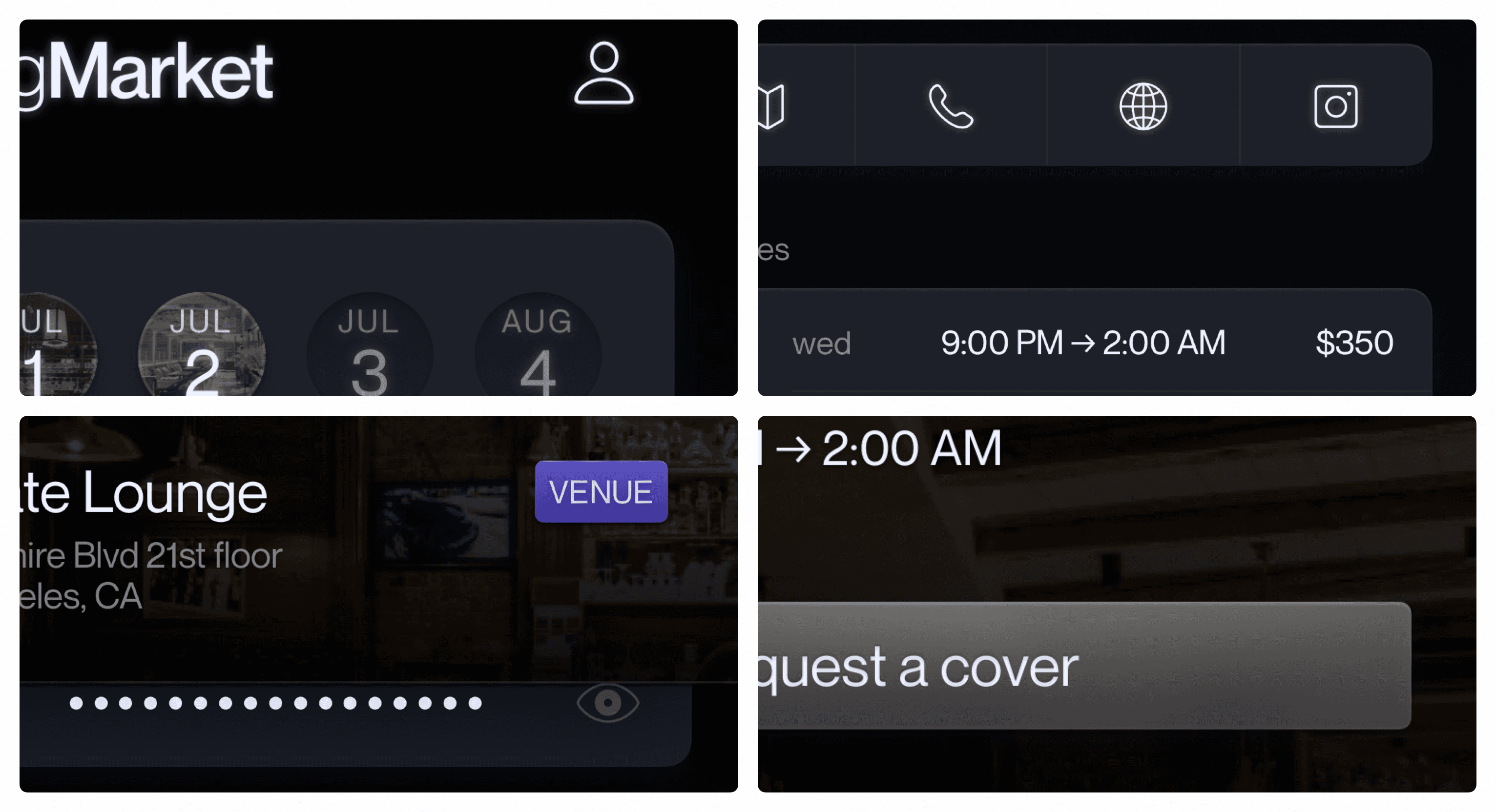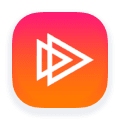In 2022, I designed the interface for gigMarket, an iOS app that connects artists with venues and performances. After craofting a high-fidelity design, with robust social features, a payments system, and more, we decided to focus on the web platform first. Later in 2024, I designed and developed a MVP version of the app in SwiftUI.
Research
Designing anything as that has to interface with a system as complex as what we were outlining with gigMarket means careful modeling. I crafted diagrams and user flows to ensure every pathway was accounted for.
Translating these concepts into UI meant thorough sketching and wireframing.
Aesthetic experiments helped us to narrow down the design direction for the iOS app—I worked with textures and pallets inspired by the environments of DJs.
Flexible Components
Two kinds of data displayed in gigMarket—user profiles and venue pages—involve disparate pieces of information coming together cohesively. I designed a set of modular components, each with a focused purpose, united with a strong visual language.
Each component type was carefully considered, with many iterations on both clarity and balance.
Whether for profiles, or for venues, the components I design keep everything concise and understandable at a glance—crucial when considering the frenetic environments gigMarket will be used in.
Venues
When viewing a venue, unique modules let users view performance details like dress code and equpment details. They can take a look at whose playing soon, and even connect to the Wi-Fi, with just a tap.
User Profile
The modules I designed here help an artist to express themselves on their profile. A customizable social graph component links to popular apps, while the links module lets users link their own press kits or mix tapes, right on their profile.
On the profile, customization is made easy and fun. A “jiggle” animation, inspired by the home screen playfully welcomes the user to personalize their profile. Details like the personalized tagline have unique visual styles as well.
Final Design
I delivered a highly robust design for gigMarket. Every state of the app, and every flow of the interface was considered, from calendars to settings.
Users can easily confirm gigs, set their availability, and browse venues and agencies, and manage invoices right from the app.
gigMarket’s settings keeps the user in context—I designed a sheet that resizes depending on the section selected.
And for developers, I wrote documentation and handed off easily inspectable UI specs.
Pivot to the Web
That was in 2022. In the following time, focus was put on to developing the web experience—crucial for making gigMarket desirable for agents.
I designed various sign-in and onboarding flows, admin layouts and themes, and email promos to assist in this process.
2024: Race to the MVP
In 2024, I designed the interface and developed a minimum viable version of gigMarket. The goal here was speed—we wanted to have DJs using the mobile experience, to accompany the successful rollout of the web platform that had been unfolding. In three weeks, I completed a polished beta experience for early users.
I simplified the design to focus on the core elements needed for a compelling companion app.
After updating the existing design system I designed earlier, it was time to develop the beta. I crafted dozens of highly polished, custom components to create a compelling experience.
Availability Picker
Core to the simplified experience is enabling users to adjust their gigging availability. I designed and developed a calendar component that can be expanded to let users block and unblock hours. Tapping on a day simply swaps availability, while a long press expands the view.
In the expanded view, users can even change their market, with a custom crafted modal.
Booked events are even shown here too—I developed inline components to let users view their events for added context.
Events
After setting hours, DJs can accept or decline invitations to events. Compact cards transparently display all of the critical information.
I created clear components for every card state, to make every interaction obvious.
The Events tab itself underwent iteration, too. I decided to merged what originally began as two separate tabs after studying how people used the first betas of the app.
Event sorting was still important—to facilitate it in the newly unified Events tab, I designed and developed a new filter component.
Welcome Flow
To create the right atmosphere for the initial sign in experience, I worked with others on the team to integrate custom video into the app. Underneath real time filters, the abstract moving backgrounds almost recreate the feeling of being in a club.
Outcomes & Learning
For gigMarket’s iOS app, I delivered not just the comprehensive interface design for the main app—which is still on track to be released some time next year—but a fully functional MVP that DJs can take advantage of. Working beyond the canvas, engaging directly in code let me deliver highly usable, highly delightful interfaces to customers.
I worked to keep the visual language of gigMarket fresh and unique—every surface feels cohesive, staying true to the aesthetic principles I developed at the beginning of the project.
Working with artists and DJs to bring such a comprehensive platform to live was a joy. I learned so much about a new part of the world, and was able to deliver a product that truly helps people with their art.
